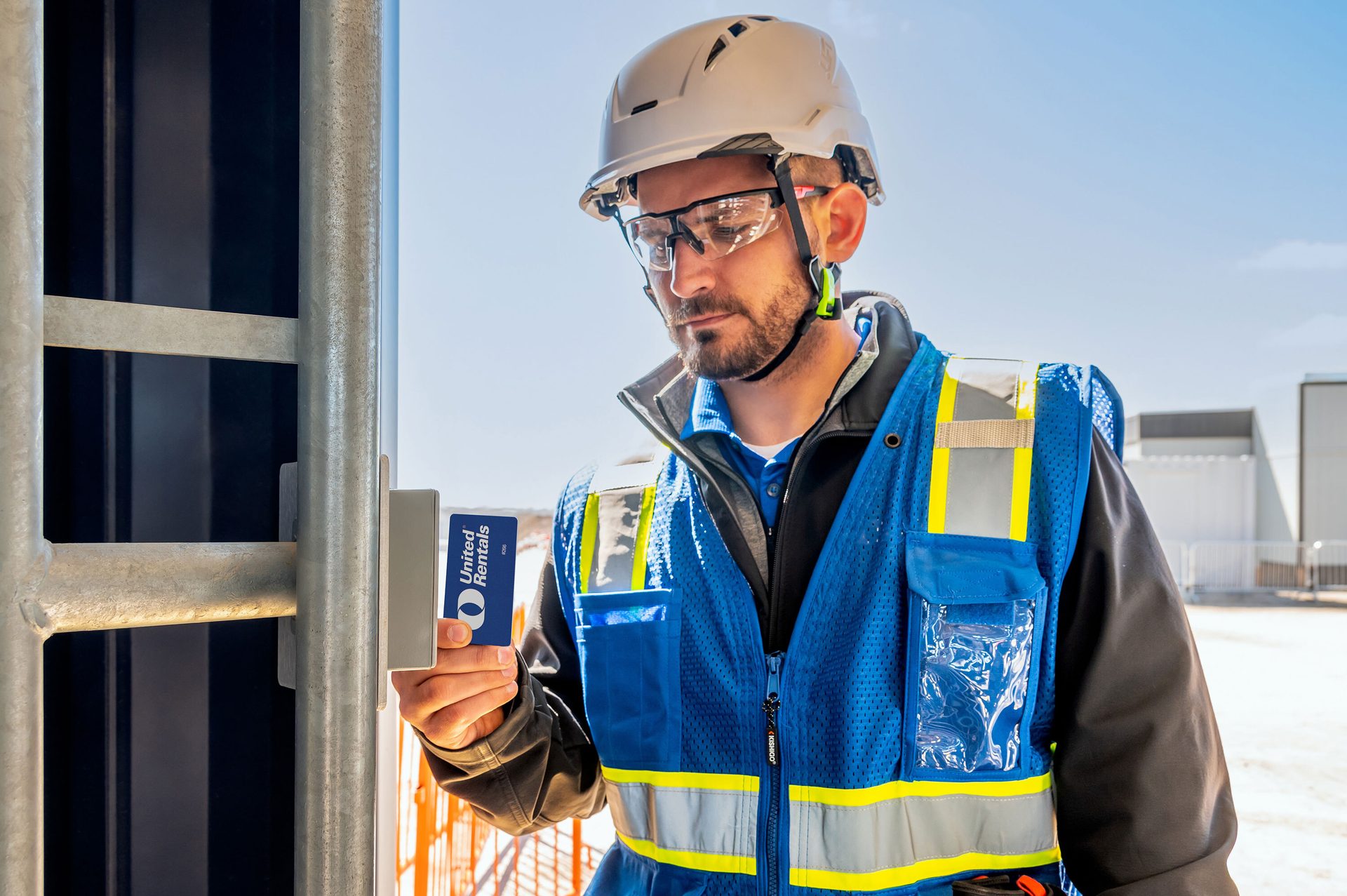Cover Story

Photo: Panupong Piewkleng / iStock / Getty Images Plus

Blueprint



to safety
Geospatial data plays a key role in increasing risk awareness in construction
By Emily Newton
G
eospatial data encompasses information about details and events on or near the Earth’s surface. People work with two types of geospatial data. Vector includes lines, points and polygons showing the Earth’s features and the area’s structures. Raster appears as pixelated or grid-arranged cells identified by columns and rows.
Safety managers and others concerned with construction workers’ well-being increasingly use geospatial data for better risk awareness. This approach maximizes the likelihood of projects getting done on time and without accidents. People often discuss geospatial data under the larger geographic information system (GIS) umbrella. Their conversations frequently reveal numerous creative ways to apply these details to support safer construction sites.
Determining the most dangerous places for road crews
The construction workers who build and repair roads while surrounded by traffic face daily dangers. The public got a sobering reminder of that reality when news broke about a March 2023 accident. It involved a Maryland crash where two vehicles driving at high speeds collided. The incident caused the deaths of six road crew workers.
Analysts can collect billions of monthly records that include and go beyond traffic information when using the two types of geospatial data to assess road risks. People can dig into the details, answering questions about how weather, congestion or other factors may increase the threats faced by road workers.
A multiyear study of road accidents in the Indian state of Rajasthan revealed traffic junctions on national roads posed higher-than-average risks. Safety managers and others armed with those details can implement additional preventive measures to keep workers safer. For example, the site linked to the six worker fatalities had them separated from traffic with concrete barriers. Even so, one of the vehicles plowed through them, demonstrating that no precautionary decision is foolproof.
Getting weather alerts from the two types of geospatial data
Many construction industry publications feature coverage of advanced technologies. The latest platforms, applications and tools can help people visualize completed projects before they start, become more aware of potential dangers and make better judgments about resource needs.
Consider one safety technology company that recently launched artificial intelligence-powered severe weather alerts. The solution displays them on top of fleet map data. Users can also set specific parameters to get notifications of issues only based on certain locations, times or weather types.
Company leaders anticipate eventually using predictive analytics to deliver highly localized weather alerts that help managers gauge the potential risks and prevent accidents. It’s easy to see the multiple benefits of this approach for site managers overseeing activities at several locations.
Relatedly, people using artificial intelligence and the two types of geospatial data to understand more about weather-related threats can make workflow scheduling changes as needed.
Enabling proactive responses to geohazards
Landslides, rockfalls and other dangers of the natural world can occur with little warning. However, assessing the two types of geospatial data can raise safety managers’ awareness of geological threats, allowing them to make strategic changes to reduce the risks.
One geohazard monitoring platform has helped customers mitigate thousands of threats across two decades. The company’s solution detects changes, flags early warning signs and provides analyses. Such information allows users to go beyond the former approach of reacting after failures happen.
This proactiveness can also extend to preventing issues associated with historic buildings. For example, experts warn Seattle, Washington, has high seismic and volcanic activity levels, putting it at risk for geohazards, including tsunamis and earthquakes.
City officials maintain a list of homes and workplaces built before required seismic reinforcements. Authorities have not mandated the retrofitting of these unreinforced masonry buildings. Since 2013, they have cataloged the affected structures and began working on codifying appropriate improvements.
Anyone leading the construction crews tasked with updating these buildings should first study the two types of geospatial data to be aware of potential risks from the start and adapt the work plans accordingly.
The larger a construction project is, the more challenging it can be to keep everyone aware of risks and mitigation measures.
Improving collaboration during large-scale projects
The larger a construction project is, the more challenging it can be to keep everyone aware of risks and mitigation measures. However, as site managers familiarize themselves with the two types of geospatial data, they can gain awareness that supports better collaboration and accurate information-sharing.
Consider a case where a service provider working for a British energy company built a geospatial data portal for a 450-acre nuclear power station construction project involving 8,000 workers. The portal creates a centralized location for all spatial maps and relevant information. As of April 2023, more than 1,500 professionals were using the portal during the project, with additional individuals registering for access daily.
Leaders report that having everyone work from the same data source has increased safety while boosting productivity and strengthening decision-making confidence. The construction site’s primary map offers interactivity and more than 100 data layers, giving people targeted information to help them tackle tasks without delays or dangers.
Supporting the inclusion of drone surveying
Some forward-thinking site managers use drone surveillance to detect unsafe behaviors among construction workers. After all, even the most dedicated supervisors can’t be everywhere at once, so they inevitably miss some risky events or choices.
Geospatial data can also improve drone efficiency in such cases. One example involves the Dutch port of Rotterdam. It’s already Europe’s largest, but officials are overseeing expansion plans to accommodate growing container volume forecasts.
Most of the work involves the construction of approximately 2.4 kilometers of retaining walls and wharves to increase the port’s capacity for handling shipments. Construction managers use drones to capture weekly progress snapshots, ensuring everything meets design specifications.
The drone photos contain geospatial data people can use to create digital terrain models of the port under construction. Those involved with the project say the photographs allow for the gathering of site information in unprecedented detail. Besides alerting people to design issues, the footage could also alert them to abnormalities that could put lives at risk if left unaddressed.
Applying the two types of geospatial data
These real-world examples show why it’s worthwhile for safety authorities to become acquainted with the two types of geospatial data and determine the most appropriate ways to apply it. Keeping people’s well-being at the forefront of all decisions contributes to efficient worksites where accidents are less likely to cause major disruptions.
Emily Newton is the Editor-in-Chief of Revolutionized, an online magazine celebrating innovations in the industrial sector.

